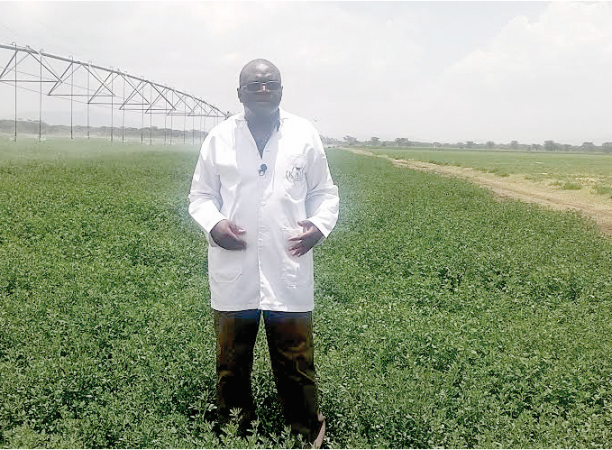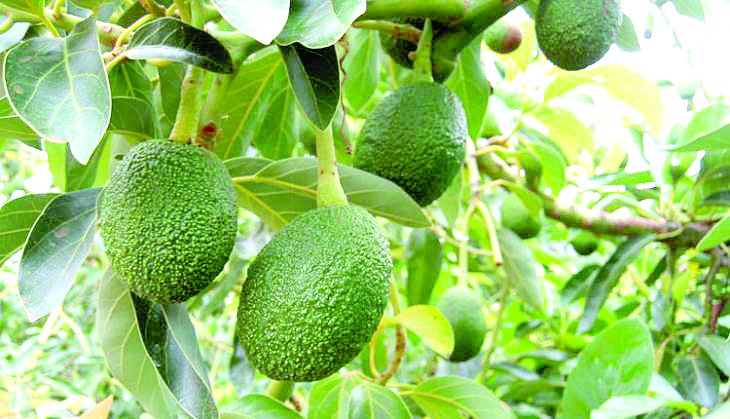Experts call for adoption in climate-smart farming tech

Like any other country in the world, Kenya is suffering greatly due to an increase in climate blows.
The main economic stay —the agriculture sector and which the majority of Kenyans relies on continues to suffer as the effects of global warming escalate.
Major food producers, small-scale farmers, are at a loss as the vagaries hit hard and equally, there seems little attention from the stakeholders. The Ministry of Agriculture predicts that the long-term shifts in temperatures and weather patterns are becoming more widespread every five years.
The Kenya Agricultural and Livestock Research Organisation (Kalro) Director-General Eliud Kireger Kireger notes that farmers, owing to extreme weather, eventualities experience almost 100 per cent crop failure, which causes discouragement and disappointment.
“Livelihoods of millions of smallholder farmers across the developing world are under big threat due to vagaries of the weather, such as severe droughts, floods, extreme heatwaves, pests and diseases. This is posing food production risks projected to increase significantly in future,” said Dr Kireger.
The challenge Kireger adds led to high levels of poverty, diseases, starvation, insecurity, low development and increased food imports. The effects to large extent have contributed to further injury of the smallholders’ purchasing power. But the climate change even though devastating, especially to the economy is a blessing in disguise as the same has incited local scientists and researchers to develop Climate Smart Agriculture technologies (CSAs).
Recently, the Association for Strengthening Agricultural Research in Eastern and Central Africa (ASARECA), during a meeting in Nairobi, agriculture stakeholders confirmed that research institutes in the region have developed numerous technologies geared toward mitigating adverse climate surprises.
But surprisingly the forum noted more than 70 per cent of the developed technologies designed over the years are yet to be commercialised leading to more suffering for the majority of the farmers.
Stakeholders complained about the lack of a strong collaboration between the national research institutes and the private sector. “Researchers in the region have developed many technologies to help in taming the effects of climate change, but the private sector is yet to adopt and commercialise the same. This has denied farmers an opportunity to introduce new crop varieties and thus manage to increase food production among other benefits,“ said Dr Enock Warinda ASARECA executive director during the one-week forum.
Climate-smart
The four-day dialogue focused on the commercialisation of climate-smart agriculture Technologies, Innovations, and Management Practices (TIMPs) practices in Eastern and Central Africa.
The director confirms that during the meeting Governments in the region agreed through their National Agriculture Research Institutes (NARIs) to operationalise private sector platforms and establish effective communication channels as well.
It was noted that in the region Kenya has over 200 CSA technologies developed by KALRO research institutes, but very few have been commercialised by the private sector for wider acceptance by the farmers.
Warinda says a study will soon be commissioned to inventories and document the best tools available in the countries that are ready for commercialisation. A process he adds will be followed with a strong engagement between NARIs and private sector groups working in the agriculture sector.
Warinda called on the region research agencies to share information on issues they are studying at any given time to avoid conflict and duplication of the same.
KALRO Naivasha based Dairy Research Institute (DRI) during the ASARECA forum was celebrated as a centre of excellence for its role in livestock research in the Eastern and Central Africa region. The recognition follows the institute’s strong infrastructure and human resource that goes into developing technologies and management of practices of dairy production.
High demand
The DRI director Evans Ilatsia said the institute is the focal point of most of the livestock research programmes in the region. “The institute has a history of strategic research in the development of dairy breeds targeting smallholder farmers and pastoral communities. Most of the developed technologies are highly sought and replicated in the neighbouring countries,” said Dr Ilatsia.
Dr Ilatsia said the organisation scientists have in the last decade developed technologies to spur growth in various agriculture subsectors, for example, dairy goat and cows, poultry and feed production. “In the recent past, we started semen harvesting from cocks to hasten the production of eggs. Products released following the application of the various technologies are highly sought by organisations and farmers from as far as Namibia, Rwanda, Burundi, Somalia, Djibouti, Tanzania, and Uganda and by the local counties,” adds Dr Ilatsia during a recent media visit at the institute.
The dairy goat improvement programme, for instance, has gained popularity leading to increased demand for dairy goats that can provide farmers with milk for consumption and surplus. Farmers from as far as Somalia and Namibia have been buying dairy goats from the institute.
Ilatsia said the dairy goat programme focuses mainly on dairy breeds, such as Toggenburg, Saanen, German Alpine and some crosses of the same.
The World Bank-funded programme through the Kenya Climate-Smart Agriculture Project was started in October 2020 and is expected to end in September 2022. The programme seeks to improve dairy goat productivity and resilience in smallholder farming systems through breeding, multiplication, husbandry technologies and dissemination of superior breeds.
He said they are targeting to get dairy goat breeds that can produce at least two litres of milk on average, unlike the indigenous breeds that produce about 400 millilitres of milk. A litre of dairy goat milk in the rural and urban areas costs between Sh80 and Sh300 respectively compared to between Sh35 and Sh40 for a cow.












